Off to the Races!
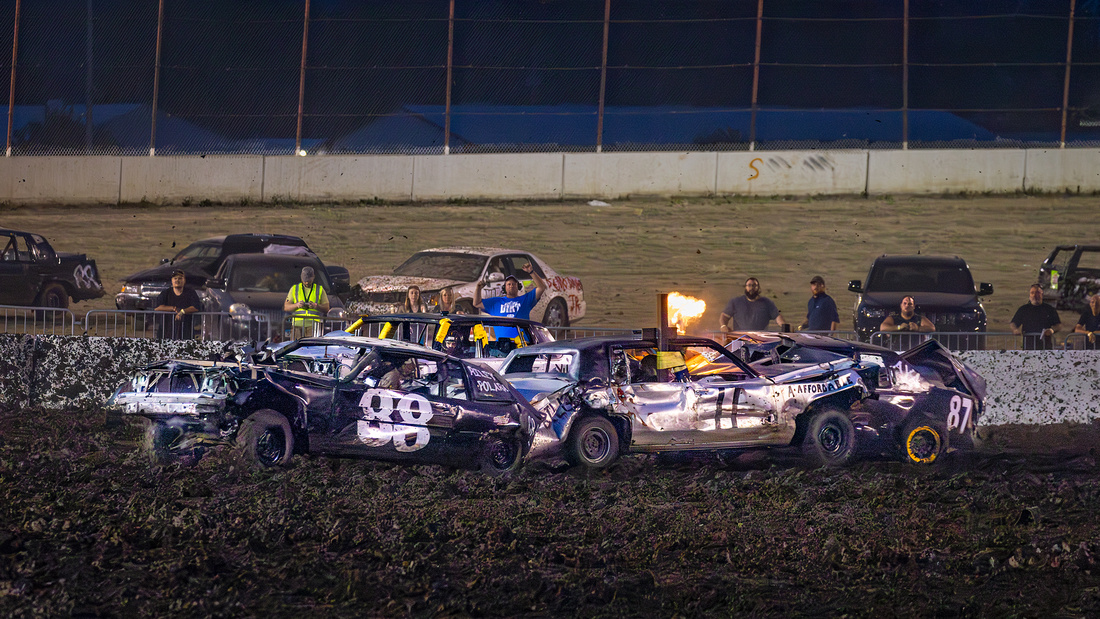

It’s NASCAR weekend in Chicago. Parts of downtown Grant Park and DuSable Lake Shore Drive are now a temporary 2.2-mile race circuit. The event promised to be an irresistible photo opportunity.
Or at least it was until I saw the prices. Tickets started at $199, with an average price of $971! Where could I find a race in my price range?
Cheap Thrills
Luckily, nearby Joliet, Illinois is the home of the Dirt Oval at Route 66 racetrack.


As luck would have it, last Saturday was a demolition derby. Back in 1971, I went to my first and only demolition derby at the Minnesota State Fair. I was one of the 8,500 fans watching 87 hardy drivers vying for a share of the $2,000 purse. It was time for me to go to another one!
Fellow photographer and friend Jon Christofersen was crazy enough to join me. $30 was all it cost for admission to the pit, where the racers and cars were staged.
The cars are a sight to behold.
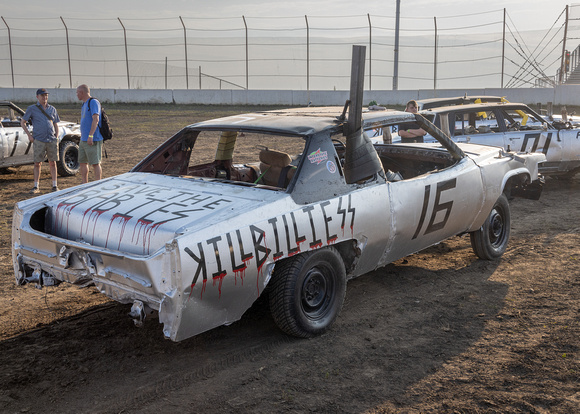

To say they are basic is an understatement.
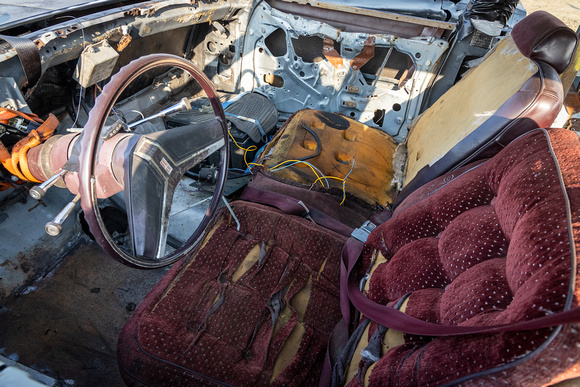

Smaller full-sized cars of the late 1980s and 1990s are popular. These largely front-wheel drive vehicles can sustain considerable rear end damage before being immobilized.
Vehicles are stripped of interior fixtures, trim, plastic, lights, and glass. Sheet metal is removed from the wheel wells and from parts of bumpers. Most of the paint and lettering comes from low cost “rattle cans.”
The doors are welded shut, and the battery, gas tank, and radiator are relocated, often to the back seat. Roll bars, fire extinguishers, and other safety equipment are likely installed.
Engines are another matter. A racing engine, transferred from car to car, can cost upwards of $10,000.
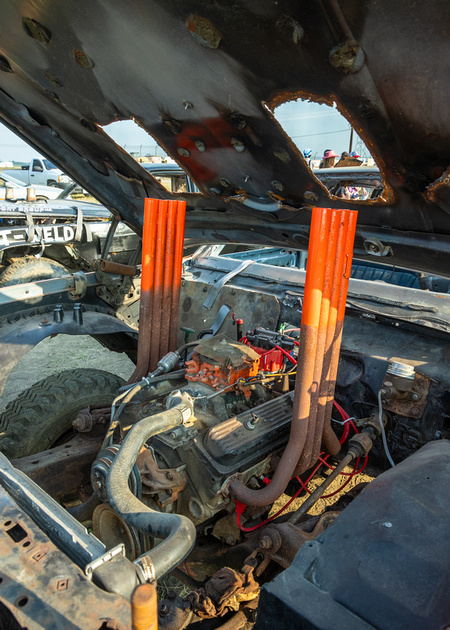

Drivers and Fans
Jon and I were pleasantly surprised by how friendly the drivers are. Several of them graciously spent time explaining the rules and strategy to us. It must be a labor of love because winning drivers only receive $1,000.
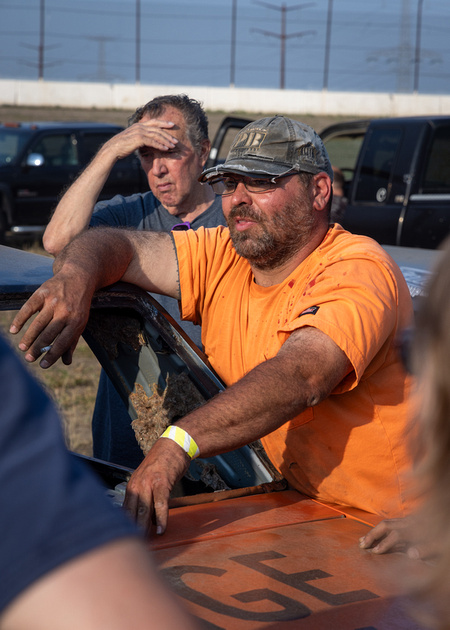

The spectators were enthusiastic with tailgate parties in the parking lot. This trio welcomed having their photo snapped.


The Shot
Teams of four cars each competed against each other. Two cars were chasers trying to take out opponents by crashing into them. The other two cars were lappers trying to be the first to complete five laps around the track with the support of their chasers.
Disabled cars were unceremoniously removed by a forklift after each race. After salvaging the engines, they were mostly headed to the crusher.
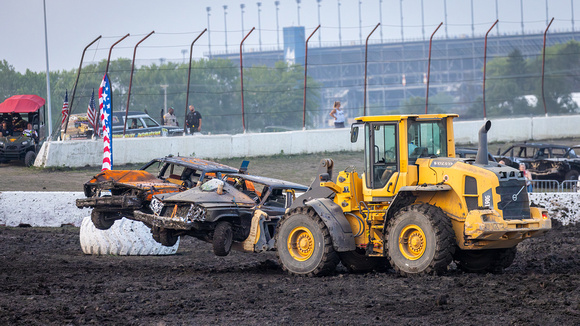

By the time I got the hang of where the action was going to be, it was late twilight. The lead photo appealed to me because of the impact, the flames shooting out of the headers, and the attentive crowd.
Thanks for looking,
Chuck Derus